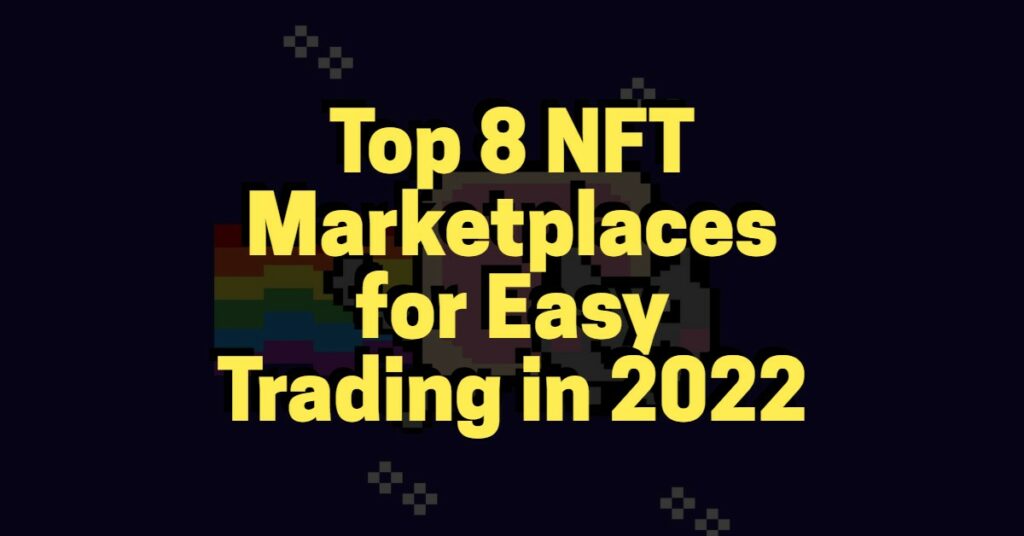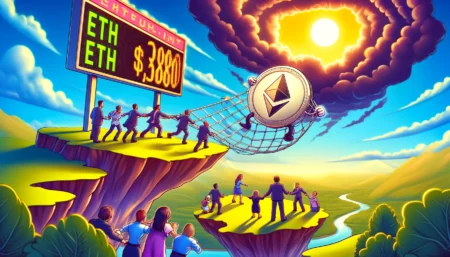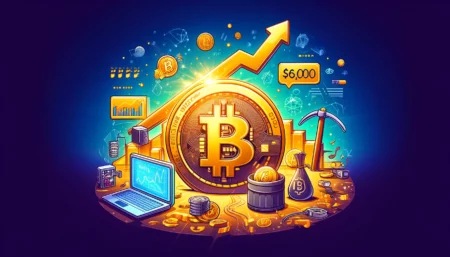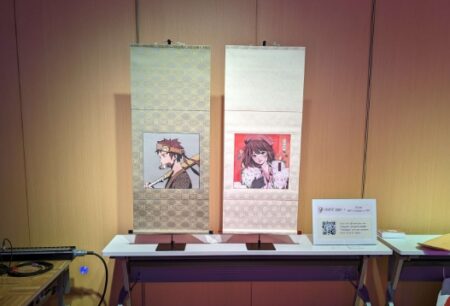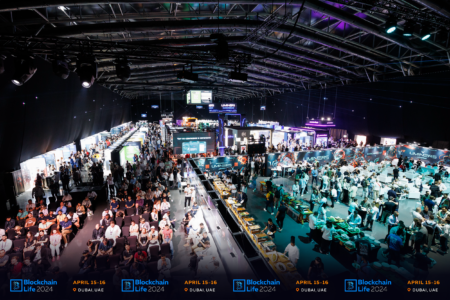From budding to global popularity, NFT has created countless myths of getting rich. Since the day it entered the art circle, NFT transactions have experienced explosive growth. Compared with the NFT market value of no more than $42 million four years ago, the value of NFT products by the end of 2020 has increased by 705% to $338 million.
In November last year, NFT sales on Ethereum ETH -3.68% successfully exceeded $15 billion. It is undeniable that the growth rate of the NFT art market is astonishing. With the general trend of NFT, various NFT marketplaces with their own characteristics are also improving the NFT marketplaces from all aspects.
What is NFT?
The full name of NFT is non-fungible tokens, which are unique digital items consisting of data units that represent the underlying assets stored on the blockchain.
If something is fungible, it means that it can be exchanged for something else. For example, a standard bitcoin BTC -3.84% token is fungible because it can be traded for the same bitcoin of the same value. And if an item is irreplaceable, it is unique, and if you trade it for something else, you will get different amounts of different items.
NFTs are purchased privately, but other parties can still see the digital asset for free.
Top 8 NFT Marketplaces in 2022
There are currently 8 major NFT marketplaces, including OpenSea, Nifty Gateway, Rarible, SuperRar, NFTDOGE, VIV3, MakersPlace, and Apenft.
OpenSea
First of all, the first NFT marketplace is OpenSea. Founded in 2018, OpenSea is a global digital item buying and selling market based on blockchain, and it is also one of the earliest and largest trading markets. Not only are there many NFT categories, but also the largest number of participants, and getting started is very simple. At the same time, Opensea charges a fee of 2.5% for both buyers and sellers from all sales, including first or secondary transactions, and the creator sets the royalty, which is 10% by default.
Nifty Gateway
The second NFT marketplace is Nifty Gateway. Compared to Opensea, Nifty Gateway is an extremely active and innovative platform. Its art-focused marketplace, often in partnership with big-name brands, athletes, and creators, has become a milestone platform for multi-million dollar auctioned NFT sales and is one of the best places to find limited-edition NFTs. And now all other services of Nifty Gateway are available for international users, just sign up on Nifty with your email address and start happy NFT transactions. Recently, Nifty Gateway has also updated a secret feature – Prepaid ETH. The hope is that Ethereum users are in an environment with the same speed of interaction as credit card users, and it only takes a second to see if the artwork is received.
Rarible
The third NFT marketplace is Rarible. Rarible is also a relatively rich platform in terms of categories, including books, digital art, movies and music albums, photos, domain names, music, Meme, games, etc. Any user can enter Rarible, create and display their own artwork, and can also use Ethereum tokens to buy artwork for collection. Users own the ownership of tokens and intellectual property rights, and buyers and sellers can trade collectibles on the RaribleNFT market at a negligible cost, reducing the cost of users to almost zero, which is relatively friendly to newcomers.
SuperRar
The fourth NFT marketplace is SuperRar. SuperRar belongs to a relatively new market that focuses on curating and providing digital art. The platform is known as an Internet digital art market with a global network of digital artists, with nearly 700 artists. Strictly following the ERC721 standard, the entire history and origin of the artwork can be traced on the distributed ledger, and no one can cheat or cheat. If you are interested in buying or selling single edition and unique digital artwork, SuperRare should be a very good choice.
NFTDOGE
The fifth NFT marketplace is NFTDOGE. NFTDOGE was created to allow artists to innovate, create, generate and earn rewards for their digital assets without the need for a third party. Also, NFTDOGE is a marketplace not only for artists, but also for collectors, supporters/affiliates who can make money while having fun. The marketplace allows for NFT generation and governance tokens for the NFTDOGE community ($NFTDOGE). NFTDOGE is an all-encompassing NFT marketplace leveraging the potential of Binance Smart Chain for accessibility, NFT sharing, creation and ownership.
VIV3
The sixth NFT marketplace is VIV3. As the first comprehensive NFT market on Flow, the underlying platform of the recent fire, one of the most notable features of VIV3 is composability. On VIV3, all of each creator’s work is minted by their own blockchain smart contracts. Under this mechanism, any application in the Flow ecosystem can directly integrate with each artist’s contract without affecting the entire market pool. This enables countless new use cases to build on top of a single asset or collection, unlocking unprecedented experiences for users.
MakersPlace
The seventh NFT marketplace is MakersPlace, which strictly controls the quality of encrypted artwork, and currently only accepts invitations (you can also try to apply). MakersPlace will generate a blockchain fingerprint for each NFT work of artists and creators to prove the origin and identity of the work, and make it a symbol of the uniqueness of the artwork. Even if the work is reproduced, there will be no authentic original signed version.
Apenft
The eighth NFT marketplace is Apenft. The biggest highlight of this platform is the NFTization of real world-class collectibles. The second major feature is that they issue platform tokens NFT as soon as they come up. In fact, for the NFT art trading platform, the important components of the NFT trading platform are very important. First of all, the NFT trading platform urgently needs a variety of and stably created artworks, collectibles or luxury goods, so it is built into a stable Channels need to have stable cooperation channels to meet the needs of different buyers. In addition, in this process, NFT transactions require wallets for bidding and payment. This process requires embedding a relatively secure wallet to satisfy transactions based on different chains.
Why buy NFTs?
Many people wonder, why should we buy NFTs if we can’t guarantee the privacy of the assets we hold? The reason is that you are buying something that cannot be copied: ownership of the asset.
For buyers, NFTs have the same function as collectibles, namely showing off. But NFTs also have a function, which is speculation. We can buy NFTs and sell them for profit in anticipation of price increases. The NFT market is relatively new at the moment, and only a few exchanges support NFT trading.
For sellers, forgoing more traditional methods and opting for NFTs to sell their works can create new markets. For example, creators of digital artwork or even emojis have few ways to sell their products. In addition, most NFT contracts entitle the seller to receive a percentage of the turnover each time the NFT changes hands.
There have also been attempts to sell NFTs in exchange for physical items, but most of the time it was aborted due to the unsmooth verification process.
How NFTs work
NFTs operate via a proof-of-work (PoW) blockchain. PoW is a process in which one party proves to other parties that a certain amount of effort has been made towards a goal
PoW is used in the same way as Bitcoin’s blockchain, where each new miner must show its contribution to the cryptographic equation in order for a transaction to be validated and added to the ledger.
In most cases, NFTs exist on the Ethereum blockchain. The Ethereum blockchain can be used to create smart contracts that digitally exchange ownership of assets. A common use case for Ethereum NFTs is the app CryptoKitties, where users can buy and sell digital kittens. The platform once sold a digital kitten for over $17,000.
Once an NFT transaction is generated, it becomes a solid component of the blockchain and is less likely to be stolen than physical assets. Like other digital crypto assets, NFTs are also kept in digital wallets.
